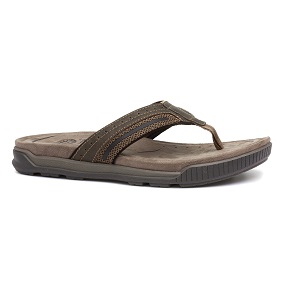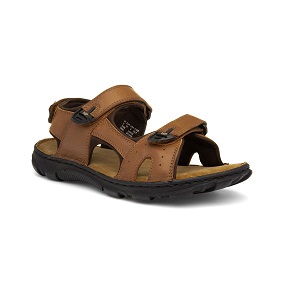How should men's sandals fit?
Wearing sandals in the warmer months is among the best things anyone can do for their feet. The open air allows your feet to breathe, which can alleviate the symptoms of some medical conditions.
When it comes to fitting men’s sandals, it’s important to know the key features of your chosen style and the benefits they provide.
Arch support:

Arch support, along with the sole, is one of the most important considerations when fitting your sandals. Without the correct arch support you could face potential foot issues, including:
Plantar Fasciitis
Heel spurs
Misalignment of the ankle
If you already wear shoes with arch support but switch to a pair of sandals without the support, you could find yourself struggling to walk due to muscle cramps and calluses. If you have a pair of men’s sandals which don’t quite hit the mark, there are many accessories you can use to enhance the comfort, such as inserts.
For fitting men’s sandals, it’s vital to consider where your foot rests on the sole.
There should be a little space between your heel and the sandal’s back strap. If you’re opting for men's mules or flip-flops, make sure your toes don’t hang over the edge of the sole. It’s also worth ensuring your foot doesn’t sit on any stitching around the sandals edge, as this could get uncomfortable when exploring for the day.
Getting the sizing right
Men’s sandals might seem difficult to fit. The lack of a body around your foot can make measuring them a little harder. Follow our steps below to ensure your sandal fits correctly:
1. Check for a little distance between your heel and the sandal’s back strap.
2. Check for a little distance between your big toe and the edge of the sandal
3. Ensure the straps fit snuggly around your feet when tightened, but not too much that you can feel the strap digging into your skin.
4. If you usually take a half-size, eight and a half for example, then consider getting a slightly larger fit for your sandals.
5. Try walking around. If the heel slips or your foot lifts away from the sole, then look for a smaller size.
Are sandals with straps good?

Whether you’re taking a stroll along the beach or planning something more adventurous having straps on your sandals can make a huge difference in how sandals should fit.
Straps on sandals are designed to secure the foot within the footbed, making it more difficult for the foot to move around. Ultimately, this prevents friction, which can cause sores and calluses.
Most straps on men’s sandals are adjustable, making them a great choice for anyone looking for a little more flexibility, while still having stable and suitable footwear.
Sandal straps usually go around the top of the foot and sit below the ankle. Men's sports sandals will often have an adjustable strap over the widest part of the foot, offering footwear that is completely customisable in terms of width fitting.
When should closed-toe sandals be worn?
Closed-toe sandals are ideal for those looking to add a little more protection to the traditional sandal design. With a closed-toe sandal, you’ll retain the lightweight design and breathable feel of a sandal, but add a little more support to your toes.
The people who really see a benefit in this sandal design are those looking for something a little more substantial, such as walkers.
If you’re planning on tackling uneven terrain or taking a summer stroll, sandals with a closed-toe will offer that added protection from the surroundings that you’ll need.
Of course, for more challenging terrains, a good pair of walking boots may be best.